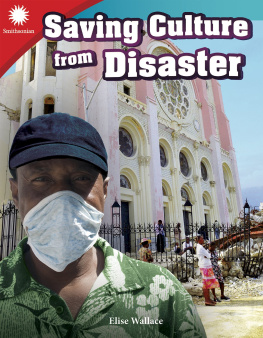Nicole Sipe - Restoring Muddy Creek
Here you can read online Nicole Sipe - Restoring Muddy Creek full text of the book (entire story) in english for free. Download pdf and epub, get meaning, cover and reviews about this ebook. year: 2018, publisher: Triangle Interactive, LLC, genre: Romance novel. Description of the work, (preface) as well as reviews are available. Best literature library LitArk.com created for fans of good reading and offers a wide selection of genres:
Romance novel
Science fiction
Adventure
Detective
Science
History
Home and family
Prose
Art
Politics
Computer
Non-fiction
Religion
Business
Children
Humor
Choose a favorite category and find really read worthwhile books. Enjoy immersion in the world of imagination, feel the emotions of the characters or learn something new for yourself, make an fascinating discovery.
- Book:Restoring Muddy Creek
- Author:
- Publisher:Triangle Interactive, LLC
- Genre:
- Year:2018
- Rating:4 / 5
- Favourites:Add to favourites
- Your mark:
- 80
- 1
- 2
- 3
- 4
- 5
Restoring Muddy Creek: summary, description and annotation
We offer to read an annotation, description, summary or preface (depends on what the author of the book "Restoring Muddy Creek" wrote himself). If you haven't found the necessary information about the book — write in the comments, we will try to find it.
Restoring Muddy Creek — read online for free the complete book (whole text) full work
Below is the text of the book, divided by pages. System saving the place of the last page read, allows you to conveniently read the book "Restoring Muddy Creek" online for free, without having to search again every time where you left off. Put a bookmark, and you can go to the page where you finished reading at any time.
Font size:
Interval:
Bookmark:
0covercover.xhtmlcover1page0001page0001.xhtml22page0002page0002.xhtmlRestoring Muddy Creek33page0003page0003.xhtml44page0004page0004.xhtmlTable of Contents A Unique Creek 4 Life Is But a Stream 6 Balancing Act 10 Restoring the Creek 16 A Success Story? 24 STEAM Challenge 28 Glossary 30 Index 31 Career Advice 3255page0005page0005.xhtmlA Unique Creek Creeks are important to living creatures. Many kinds of fish live in them. Insects lay eggs in them. Creeks are places where frogs make homes, birds take baths, and kids play on hot summer days. Without water sources like creeks, life could not survive. One important body of water is called Muddy Creek. It is in Edgewater, Maryland. This small creek is important because it is the site of a major makeover. For a long time, Muddy Creek was out of balance. The land around the stream was worn down. This caused the water to flow faster when it rained a lot. Fast-moving water in a small stream is harmful. Fast water destroys the homes of the animals that live in and near it. It can also carry more pollution and waste with it. Muddy Creek was a mess for many years, until scientists set out to restore it. Edgewater, Maryland, USA66page0006page0006.xhtmlA scientist collects data at Muddy Creek.77page0007page0007.xhtmlLife Is But a Stream Muddy Creek is a small stream but it has a big impact on nature. All the land on Earth is part of a watershed. Drop by drop, the water from rain and snow goes into the ground. It makes its way into creeks and rivers. Then, it ends up in the ocean. A change in even one small creek can affect an entire watershed. To understand how important creeks are, think about your body. It is made up of veins and arteries that carry blood all around your body. Earth works in a similar way. But instead of veins and arteries, Earth has creeks and rivers that carry water all around the world. This water is needed by every living thing. A river flows into the sea.88page0008page0008.xhtmlriver creeks Gravity pulls water downhill, creating rivers and creeks. Science Pulling Water When it rains or when snow melts, gravity pulls the water downhill. The land absorbs some water. The rest flows along the surface of the land. Rivers and streams are formed. They flow into larger bodies of water, such as lakes and oceans.99page0009page0009.xhtmlWaterways are important, so we want to take care of them. What does a natural creek look like? A natural creek bed does not follow a straight path. Instead, it has lots of twists and turns with deep and shallow pools. It has clear water and shady trees along the sides of the creek, called banks. A creek is home to many living things. You may see moss growing on rocks and plants growing along the bank. You may see frogs, fish, and flying insects. You may also spot birds and other animals at a creek. An area with natural creeks and streams is also better prepared for floods. During heavy rain, water in a shallow creek will flow over the banks of the creek. This water soaks into the flat ground nearby. The nearby ground is called a floodplain. A creek needs a floodplain in order to stay in balance. Ducks rely on creeks for food and water.1010page0010page0010.xhtmlmossy rocks along a creek Most of Earth's surface almost three-fourths of it is covered in water. But only a small amount is usable by humans.1111page0011page0011.xhtmlBalancing Act Muddy Creek started out in balance. Over time, this changed. It didn't happen all at once. It took many years. Little by little, the creek bed wore down. It dropped 3 meters (10 feet) below the floodplain. When heavy rains fell, it didn't flow over the banks and onto the floodplain. Instead, it just made the water flow faster, which made the creek bed wear down even more. Muddy Creek was out of balance. A creek without a floodplain cannot stay in balance. This flat land is important. It is even more important when there is a storm. Without a floodplain, extra water rushes through the stream very quickly. Fast water carries sediment with it. It makes a creek wear down quickly. It removes important minerals from the soil. Seasonal flooding can be helpful. Floods add nutrients to the soil and refill underground water supplies.1212page0012page0012.xhtmlMuddy Creek before restoration1313page0013page0013.xhtmlHow did Muddy Creek get so worn down? It happened because of erosion. Rocks, dirt, and other things in Muddy Creek became loose. Then, these things were moved by water, ice, wind, and gravity. Erosion is a natural process. It can take thousands of years. But humans can speed it up. Changing a creek in any way can affect where and how much erosion occurs. Scientists think that Muddy Creek wore down after a culvert was added to it. This tunnel was built to direct the flow of the water under a nearby road. The tunnel connected the creek from one side of the road to the other. It worked for a while. But the tunnel was narrow and made the water flow very fast. This fast water made the land around Muddy Creek erode. This section of Muddy Creek eroded 3 m (10 ft.).1414page0014page0014.xhtmlCulverts speed up water and cause more erosion. Technology Speeding Water Forcing water through a narrow space makes it move faster. Garden hoses and showerheads are designed like this to speed up the flow of water.1515page0015page0015.xhtmlErosion and Stream Health If you ever get the chance to visit a stream, take a look around you. You might notice signs of erosion. Cracks in the soil along the banks are one sign. Trees with exposed roots are another. Brown or muddy water is also a sign. When a creek erodes, dirt is washed away from the bank. This dirt is also called sediment. A stream with a lot of sediment can hurt animals that live in the water. The dirt gets in the spaces between rocks where fish live. This makes it hard for the fish to find homes in the rocks. It also suffocates fish and their eggs. When scientists evaluate a body of water, they often look at the living things in and around it. Insects are one type of creature they pay attention to. When the types of insects in an area change, it is a sign that the habitat is also changing. dragonfly white perch Muddy Creek is home to more than 133 species of fish, reptiles, birds, mammals, and other creatures.1616page0016page0016.xhtmlExposed roots are a sign of erosion.1717page0017page0017.xhtmlRestoring the Creek A plan was needed to restore Muddy Creek. What could be done to help the stream? Scientists broke the project into steps. Three important things needed to happen. First, the creek bed needed to be raised. The creek bed had eroded too much. It was too deep to let water spill over into the floodplain. To restore the creek, the creek bed needed to be closer to the floodplain. Second, the water in the creek needed to slow down. Slower water would decrease erosion and damage to the creek in the future. Third, the floodplain needed to be restored. Many of the water-loving plants that once lived on the banks of Muddy Creek had died. Plants that thrived in dry soil grew in their place. Many animals that lived on the banks had to find other homes. A raised creek bed would restore the area. Plants would regrow. Animals that had left would be able to return. Scientists collect water samples.1818page0018page0018.xhtmlWorkers raise Muddy Creek up to the floodplain. Nearly 6, 000 kilometers (3, 700 miles) of streams across Maryland are set to be restored by the year 2025.1919page0019page0019.xhtmlRaise It Up To raise Muddy Creek, the creek needed to be filled. It was like filling a hole with dirt, except that the hole being filled was 410 m (1, 350 ft.) long! First, a small pipe was added to the creek. This pipe would let the creek flow underground during the restoration. Next, materials were poured over the pipe and into the creek bed. Scientists selected a mixture of sand and wood chips. These kinds of materials are used for stream restorations because they are natural. They create a space for plant roots to grow. When plant roots grow in the soil, they help hold the soil in place. This helps slow erosion. Lastly, the underground pipe was removed. Slowly, the water began to flow in its bed again. It filled the newly restored creek. Pipes like these let scientists test water under the ground while the creek was being restored.2020page0020page0020.xhtmlThe pipe in the creek let water keep flowing underground while the creek was being restored. Arts The Art of Nature Stream restoration is a mix of science and art. The goal is to repair a damaged stream. But it must be done with respect to the landscape. Scientists do this by mimicking a great artist : Mother Nature. Sand, leaves, wood, and rocks help the creek without taking away from its natural beauty.2121page0021page0021.xhtmlSlow It Down The next thing to do was to slow down the water in the creek. Rocks and boulders were added to the stream in certain places. Shallow pools of water were also created all along the creek. Small dams were built out of logs and sticks. The creek was widened in places to spread out the water. All these things made Muddy Creek flow more slowly. A slow creek is peaceful to see. But it is also important for other reasons. Fast-moving water makes a creek erode faster. A floodplain needs water to move slowly so that it has time to soak into the ground. If water is moving too fast, it will continue to flow above the ground. This washes important nutrients away from the floodplain. These nutrients are needed to keep the soil in the floodplain rich.2222page0022page0022.xhtmlbeaver dam Engineering Natural Solution In the wild, beavers are known for making dams. Beaver dams help slow the flow of water. Scientists fix streams by building structures that look very much like beaver dams. These structures are made of wood and plants, just like beavers would use. They help reconnect floodplains to their waterways.2323page0023page0023.xhtmlRestored Floodplain Muddy Creek was raised and began flowing slower. Now, the floodplain could change back. It was now mostly level with the creek. It was not 3 m (10 ft.) above the water like it once was. The floodplain could again be a habitat for native trees and plants. Before the creek eroded, red maple trees grew along the banks. These trees grow well in wet soil. They thrived in the wet soil found next to the creek. But then, Muddy Creek became too deep to reach the floodplain. The red maple trees were cut off from the water. Beech trees and tulip poplars grew in their place. These trees grow well in dry soil. After Muddy Creek was restored, scientists noticed that red maple trees started growing again along the banks. The tulip poplars began to die off. These were signs that Muddy Creek was changing. white-tailed deer red fox Mammals rest and look for food in floodplains. These areas are also stops for migrating birds.2424page0024page0024.xhtmlred maple tree branch before during after2525page0025page0025.xhtmlA Success Story? The restoration of Muddy Creek began in January 2016. By summer of the same year, the creek looked very different. It was well on its way to being restored. Muddy Creek now had flat, low banks. The wide stream had new red maples growing next to it. Insects buzzed above the gentle water. Frogs croaked from behind logs. Birds sang in the shade of the trees that lined the stream. Muddy Creek seemed like a success story. Right? Well, not everyone would agree. Red bacteria began to grow after the creek was restored. Many parts of the creek became coated in a red film. Scientists are trying to figure out why this is happening. They also want to know if the bacteria will harm the creek's ecosystem. No one has answers to these questions yet. Red bacteria grows in Muddy Creek after it was restored.2626page0026page0026.xhtmlA scientist collects a sample of red bacteria from Muddy Creek. Mathematics Seeing Red What is making the red bacteria grow in Muddy Creek? Scientists are using math to find out. First, they collected small samples of the creek water and bacteria. Then, they tested the water multiple times. Comparing the data from the tests showed that the oxygen level dropped over time. But why? Scientists need to run more experiments to know for sure!2727page0027page0027.xhtmlRestoring a creek is not simple. It is hard to tell whether the project is a success. It takes a long time to see results. Scientists know that raising a creek bed helps the flow of the water. But creek restoration is still new. It will take many years of watching Muddy Creek to find out how it reacts over time. Then, they will know whether restoring a creek is worth the time and cost in the long run. Muddy Creek is just one of many streams that has been restored. Other projects like it are taking place all around the world. Scientists debate the best way to restore waterways. But everyone agrees that our waterways need attention and care.2828page0028page0028.xhtml
Next pageFont size:
Interval:
Bookmark:
Similar books «Restoring Muddy Creek»
Look at similar books to Restoring Muddy Creek. We have selected literature similar in name and meaning in the hope of providing readers with more options to find new, interesting, not yet read works.
Discussion, reviews of the book Restoring Muddy Creek and just readers' own opinions. Leave your comments, write what you think about the work, its meaning or the main characters. Specify what exactly you liked and what you didn't like, and why you think so.
















